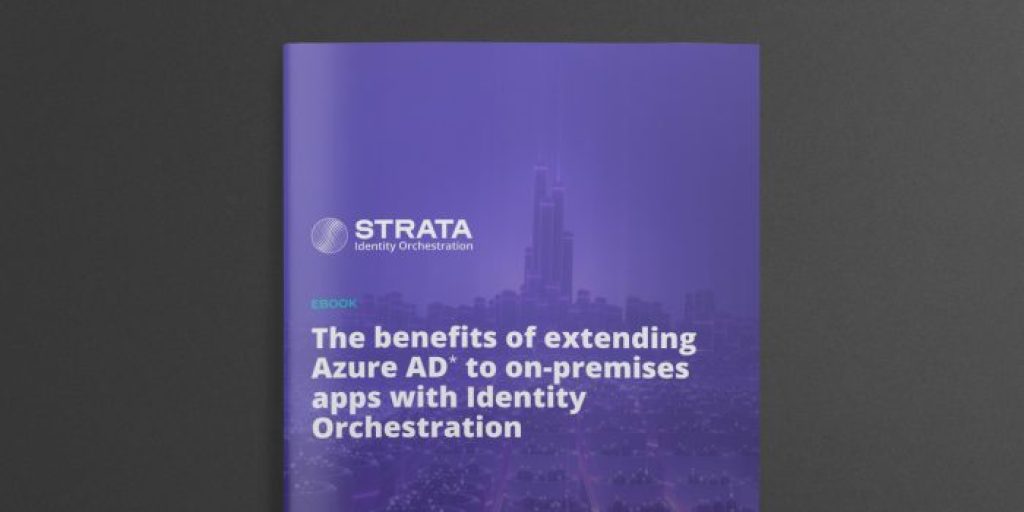Eliminate security vulnerabilities with app modernization

Cybersecurity is non-negotiable. So, when it comes to enterprise budgets, it’s the one place we typically don’t see cuts — even in an unpredictable economic environment. In fact, cybersecurity recently surpassed innovation as the number one priority for global IT leaders when it comes to digital transformation.
While the term security is broad, Gartner forecasts that cloud security will be the strongest spend category growing 26.8% in 2023, followed closely by application security — expected to capture $7.5 billion in 2023 spending.
Legacy applications pose considerable risks to your cybersecurity posture because multi-factor/passwordless authentication is notoriously difficult (or impossible) to use with them. Today, more and more IT leaders are recognizing these factors as security vulnerabilities and are leaning into what it takes to modernize and secure their organizations in 2023 and beyond.
The importance of application modernization
The path to impenetrable cybersecurity begins with application modernization. The more organizations can modernize their applications, the closer they become to enforcing the session revocation and the zero trust principles we’re all working toward.
Without modernization, organizations have separate, inconsistent controls in each and every app, making it impossible to maintain a strong/effective security posture.
For example, if a legacy application is manually maintained, it has its own policy rules, sessions, or login experiences that can’t be audited. The organization can’t ensure that, if an employee leaves, the user doesn’t hang onto their credentials and have access to the app — leaving the door open to causing damage.
The benefits of application modernization
A recent study of IT decision-makers’ priorities reveals the most common reasons organizations cite for modernization include the following:
- To implement a zero trust security model
- To implement an identity governance program
- To manage identity silos created by multi-cloud environments
- To modernize identity systems and reap the benefits of the cloud
- To avoid vendor lock-in with a legacy system at its end-of-life (EOL)
When an organization modernizes its legacy applications, the benefits extend beyond flexibility, innovation, and a better user experience — it also greatly improves overall security posture.
Benefits include increased protection against cyber threats, reduced risk of data breaches, and overall peace of mind.
The fastest and most cost-effective path to modernization
Time is the biggest risk to any organization trying to rewrite its applications manually. The security environment is incredibly fast-paced, but the traditional method for reworking applications to speak modern authentication is very slow.
While modernizing individual applications the traditional way takes an immense amount of time, effort, and money to rewrite an app’s original code, Strata enables rapid modernization via the Maverics Identity Orchestration Platform.
Maverics enforces policy based on your identity providers, groups, roles, and policies by using an abstraction layer to decouple apps from identities. Using Identity Orchestration can help organizations maximize existing investments and move to the cloud without all the rewrites that tie up expensive personnel resources. Strata can help externalize security authentication authorization from applications that the abstraction layer to be the only thing that needs to stay consistent with modern standards.
Eliminating vulnerabilities with Strata
Identity is the foundation of security — knowing who has access to what. Strata’s Maverics Identity Orchestration Platform can help reduce the risk of a security breach by quickly and easily eliminating security vulnerabilities, including inadequate access controls, password vulnerabilities, lack of visibility, inconsistent access management across different systems, and insufficient data governance.
Inadequate access controls
Legacy applications often have identity management systems without the necessary controls to enforce appropriate access to sensitive information. Maverics can help implement granular access controls and ensure that only authorized users can access sensitive data.
Password vulnerabilities
Passwords are a common point of vulnerability in any system. Identity Orchestration can help implement multi-factor authentication (MFA) or passwordless authentication and other modern authentication mechanisms quickly — even on non-standards-based apps — which can help eliminate the risk of password-related breaches.
Lack of visibility and monitoring
Legacy identity management systems often lack the necessary visibility and monitoring capabilities needed to detect and respond to security breaches. Identity Orchestration with Maverics can help provide real-time visibility and monitoring of user access and activity, which can help detect and respond to security breaches more quickly.
Inconsistent access management across different systems
When different systems have different identity management systems, it can be difficult to manage user access consistently. The Maverics Platform can help unify identity management and provide a single point of control for access management across systems.
Insufficient data governance
Legacy identity management systems often lack the necessary data governance capabilities to ensure that sensitive data is protected and used appropriately. Strata’s Maverics Identity Orchestration Platform can help improve data governance by providing better visibility into how data is being accessed and used — and by implementing appropriate controls to ensure that data is protected.
Modernize your applications for a strong cybersecurity posture
As cybersecurity threats escalate, it’s more important than ever for organizations to factor application modernization and Identity Orchestration into their security budget. Modernizing application identity is the fastest and most cost-effective path to improving security postures. It enables IT leaders to enforce session revocation and the zero trust principles they’re working towards. By embracing modernization, organizations can enjoy increased protection against cyber threats, reduced risk of data breaches, and overall peace of mind. We encourage all IT leaders to embrace application modernization to enhance their cybersecurity posture and achieve digital transformation securely.
Find out how Strata can help you achieve your security goals and reduce risk — while realizing an average 40x return on investment. Download Strata’s ROI guide.




